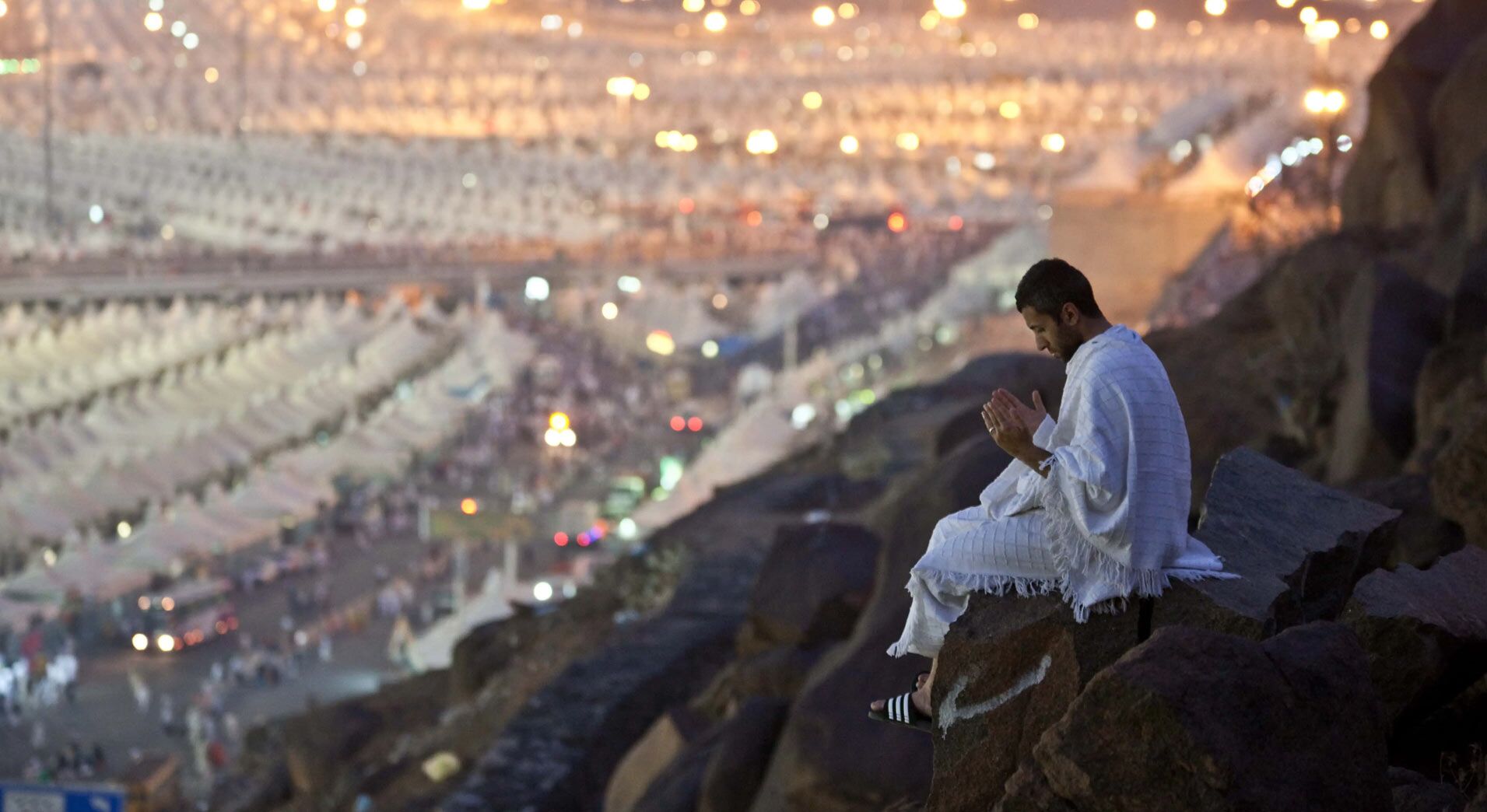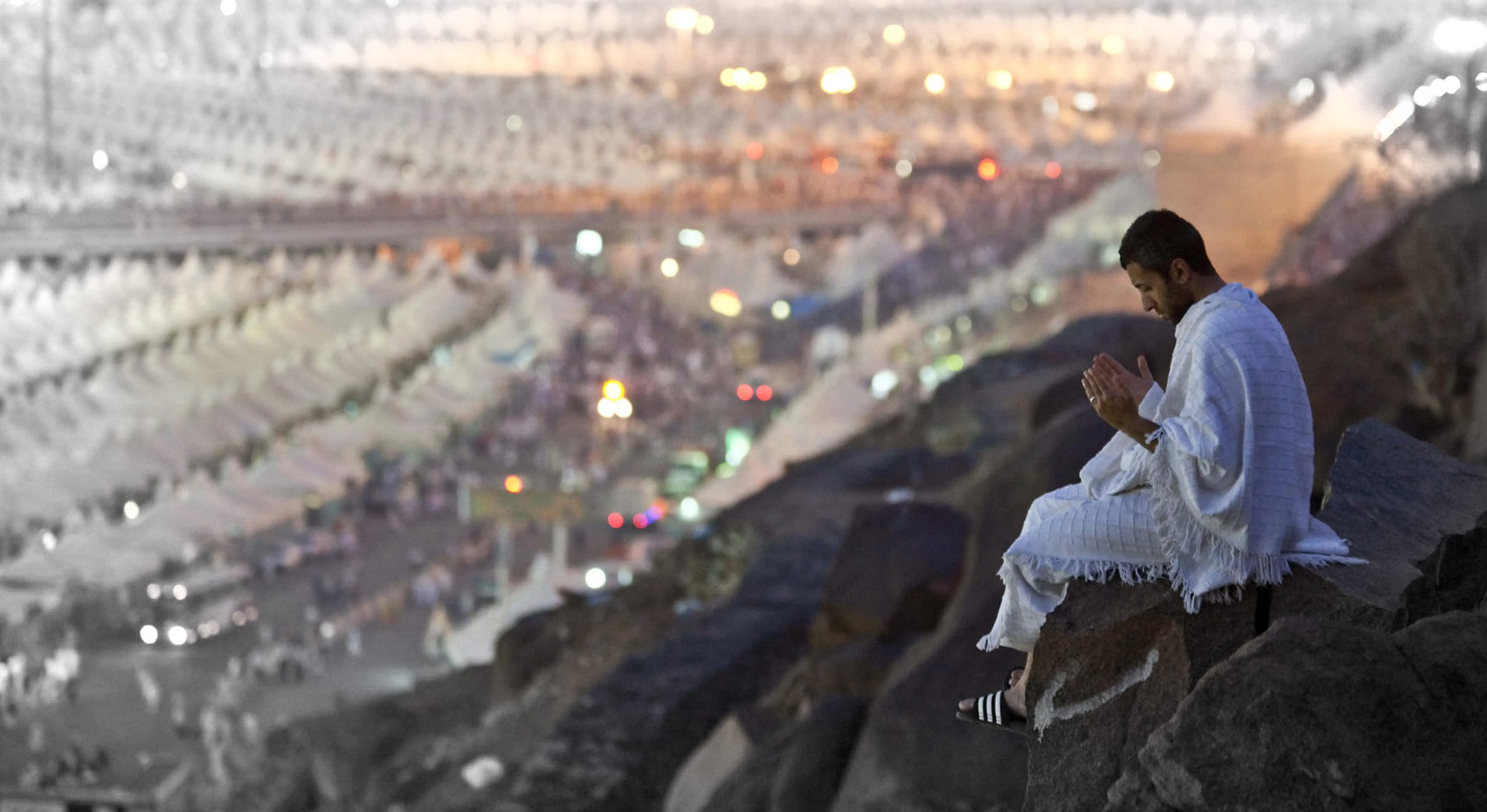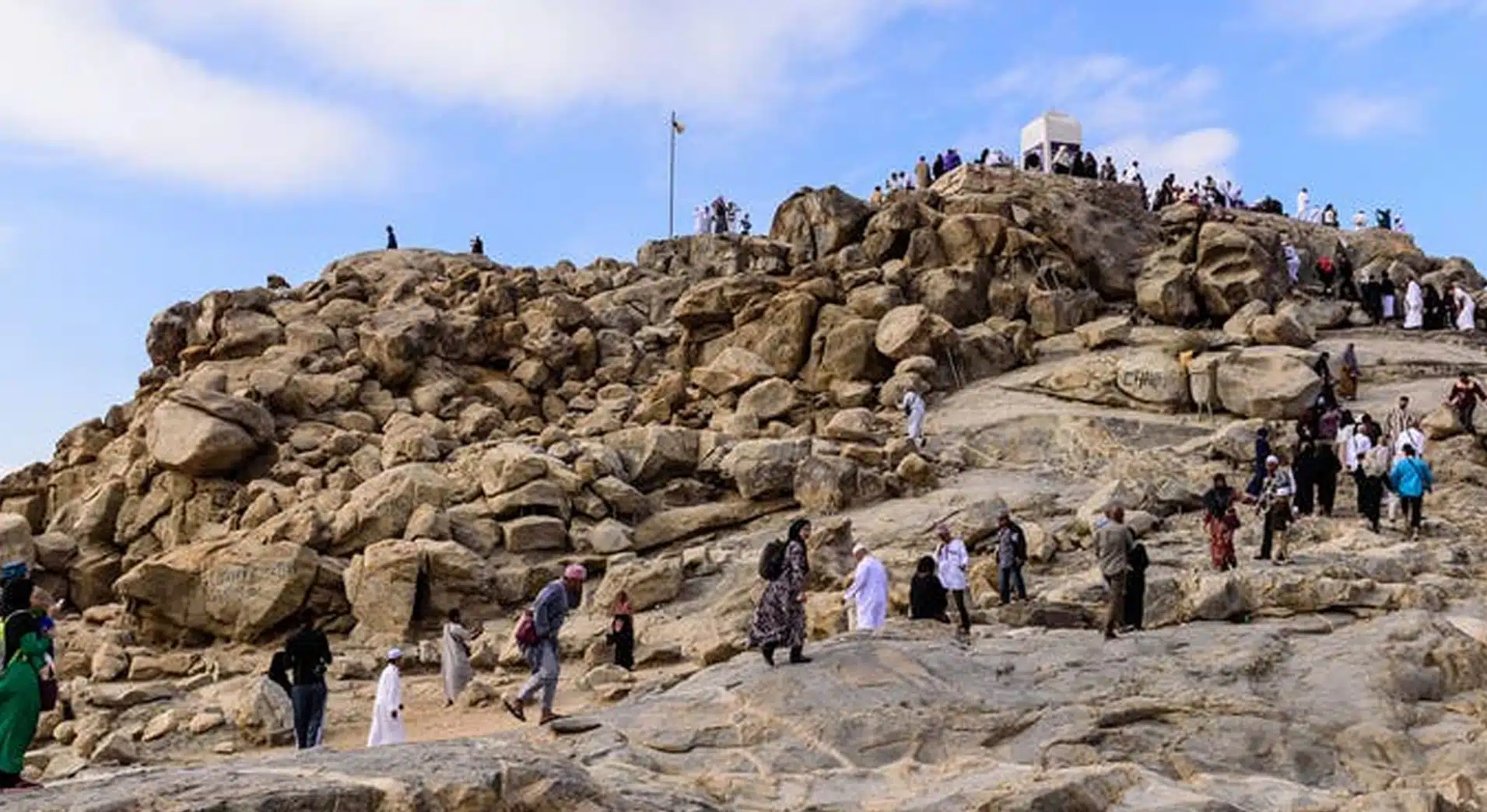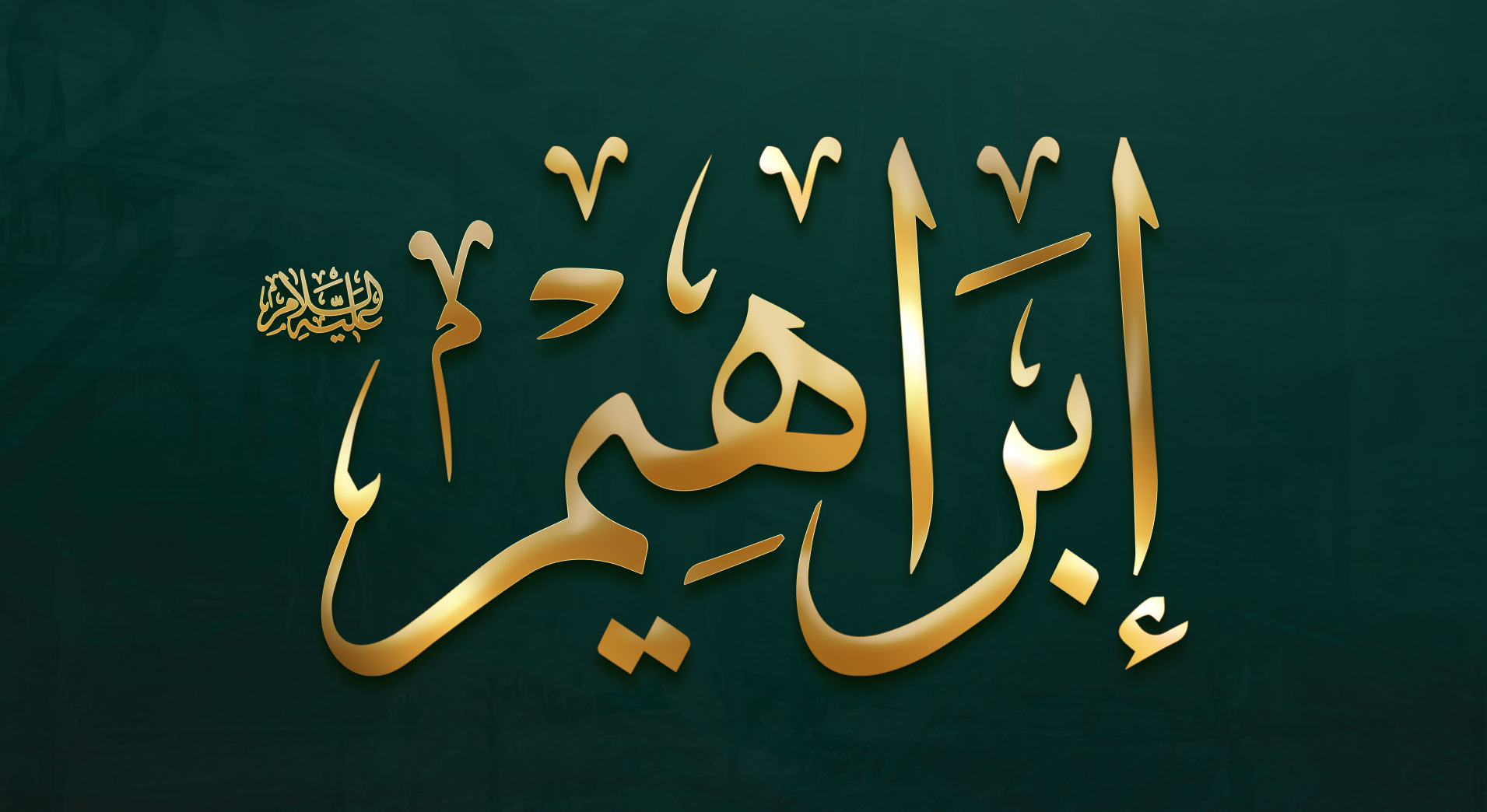Hajj holds immense significance in the Islamic faith, representing the pinnacle of spiritual devotion and obedience. It is the holy pilgrimage where a huge number of Muslims belonging to different cultures, different nationalities, and different backgrounds gather in Makkah, the city of Saudi Arabia.
Due to its undeniable significance and profound impact, Hajj stands as one of the pillars of Islam and is mandatory for every Muslim who is financially able to perform Hajj at least once in his lifetime.
In this article, we will get into the details of the Hajj, why it holds so much importance in the religion of Islam, and the individual and communal benefits it possesses for the Muslim community.
THE FOUR PILLARS OF HAJJ
Hajj consists of several essential rituals, referred to as its pillars, which symbolize different aspects of faith and submission to Allah (God). These pillars include
IHRAM: A STATE OF RITUAL CONSECRATION
The first pillar of Hajj is entering the state of ihram, where pilgrims don special garments and adopt a state of purity and consecration. This physical representation signifies the unity of all Muslims, regardless of their social status, ethnicity, or nationality, before their Creator.
TAWAF: CIRCUMAMBULATION OF THE KAABA
Upon reaching Mecca, pilgrims engage in tawaf, which involves circling the Kaaba, the sacred structure built by Prophet Ibrahim (AS) and his son Ismail (AS). This act symbolizes the unity and devotion of the Muslim community, as they all revolve around the focal point of their faith.
SA’I: THE RITUAL WALK BETWEEN SAFA AND MARWA
Following the tawaf, pilgrims undertake sa’i, a symbolic walk between the hills of Safa and Marwa. This ritual commemorates the perseverance and faith of Hajar (AS), the wife of Ibrahim (AS), as she searched for water for her son Ismail (AS). It highlights the importance of trust in Allah and the concept of reliance on divine providence.
STANDING AT ARAFAT: THE CLIMAX OF HAJJ
Gathering on the Arafat is the pinnacle of Hajj. All the pilgrims of Hajj gather at a vast plain which is known as the Plain of Arafat and spend their whole from sunrise to sunset on that plain. This is the same plain where all Muslims will gather on the day of Judgement and will answer ALLAH (SWT) about their deeds.
There the pilgrims engage themselves in the worship of ALLAH (SWT), ask for repentance of their sins, and seek mercy and guidance from the creator of the Universe –ALLAH (SWT). This spiritual experience implies that every Muslim no matter what their color, race, or nationality is from ALLAH and will return to ALLAH. No one is superior to others and every person Muslim stands equal in front of ALLAH.
THREE OBLIGATORY ACTS OF HAJJ
Other than pillars of HAJJ, there are three obligations of Hajj
ACT 1: ASSUMING IHRAM FROM THE MEEQAT
Prophet Muhammad (peace be upon him), after enumerating the mawaqeet (stations) of Hajj, conveyed,
“Those mawaqeet are designated for the residents and non-residents who traverse through them with the intention of performing Hajj or ‘Umrah.” (Bukhari)
ACT 2: STONING OF THE JAMARAT
Allah, the Most Sublime, declares in the Holy Quran,
“And remember Allah during the appointed days” [Holy Quran, Al-Baqarah: 203]. In this divine verse, the Almighty refers to the days of al-Tashreeq.
The Messenger of Allah (peace be upon him) remarked,
“Indeed, circumambulating the House, the circuits between as-Safa and al-Marwa, and the act of stoning the pillars have all been ordained to serve as a means of remembrance of Allah.” (Abu Dawud)
ACT 3: TRIMMING AND SHAVING OF THE HAIR
Allah, in the Holy Quran, proclaims,
“Verily, you shall enter al-Masjid al-Haram, if Allah wills, in a state of security, some of you having your heads shaved, and others having your hair trimmed.” (Holy Quran, al-Fath: 27)
All pilgrims must follow the above-mentioned obligations of Hajj. However, if a person skips any of the obligations it will not affect his Hajj but he has to sacrifice an animal (cow, sheep, or one-seventh of she camel) to compensate for it. Another thing that must be noted is that the sacrifice should be done within Makkah and the meat should be distributed among the poor.
Ibn Abbas (RA) said,
“Whoever forgot any of the rituals (obligatory acts) or left it must offer a sacrifice.”
Days of Hajj
The days of Hajj follow a specific schedule and have significant religious and historical importance. Here is an overview of the days of Hajj along with the corresponding Islamic dates and their titles:
8th of Dhu al-Hijjah: Day of Tarwiyah (Yawm at-Tarwiyah)
On this day, pilgrims leave for Mina, a tent city located near Mecca. They enter into a state of Ihram (a state of ritual consecration) by performing specific acts of purification, wearing special garments, and reciting the intention for Hajj.
9th of Dhu al-Hijjah: Day of Arafah (Yawm al-Arafah)
Pilgrims spend the entire day in Arafah, a vast plain located outside of Mecca. This is the most important day of Hajj, often referred to as the “Hajj Day.” Pilgrims engage in worship, seek forgiveness, make supplications, and listen to sermons. Standing on the plain of Arafah is considered a pinnacle of the Hajj experience.
10th of Dhu al-Hijjah: Eid al-Adha and the Day of Sacrifice (Yawm an-Nahr)
This day marks the beginning of the festival of Eid al-Adha, which commemorates the willingness of Prophet Ibrahim (AS) to sacrifice his son as an act of obedience to God. Pilgrims perform the symbolic ritual of animal sacrifice, known as Qurbani, in remembrance of Ibrahim (AS’s) act. This day also marks the stoning of the Jamrat al-Aqaba (the largest pillar representing Satan) in Mina.
11th to 13th of Dhu al-Hijjah: Days of Tashreeq (Ayyam at-Tashreeq)
These are the days when pilgrims continue to stone the three pillars representing Satan in Mina. The stoning is done after midday, and the number of stones thrown at each pillar varies. These days are also characterized by various rituals and acts of worship, including the performance of the Farewell Tawaf (circumambulation) around the Kaaba.
Types of Hajj
There are three types of Hajj in Islam
Hajj al-Tamattu
This is the most common type of Hajj performed by the majority of pilgrims. It involves performing both Umrah and Hajj, but with a break in between. Pilgrims enter the state of Ihram and perform Umrah during the months of Hajj (Shawwal, Dhul-Qadah, and the first ten days of Dhul-Hijjah). After completing Umrah, they exit the state of Ihram and resume their normal activities until the 8th of Dhul-Hijjah when they enter the state of Ihram again for the Hajj rituals.
Hajj al-Qiran
This type of Hajj involves combining Umrah and Hajj without exiting the state of Ihram in between. Pilgrims enter the state of Ihram intending to perform both Umrah and Hajj together. They complete the rites of Umrah and continue to stay in the state of Ihram until the days of Hajj. The pilgrims perform the Hajj rituals without exiting the state of Ihram.
Hajj al-Ifrad
In this type of Hajj, pilgrims enter the state of Ihram specifically for Hajj only. They do not perform Umrah as part of their pilgrimage. They maintain the state of Ihram until they complete the Hajj rituals.
IMPORTANCE OF HAJJ IN QURAN AND HADITH
Hajj and its significance have been mentioned several times in the Holy Quran and in the Hadiths which shows how much significance this holy pilgrimage possesses in Islamic culture.
The obligation of performing Hajj is mentioned in Surah Al Imran
And [due] to Allah from the people is a pilgrimage to the House – for whoever is able to find thereto a way.” (3:97)
The Quran emphasizes the unity and equality of all Muslims during Hajj. In Surah Al Hujurat (49:13), Allah says,
“O mankind, indeed We have created you from male and female and made you peoples and tribes that you may know one another. Indeed, the most noble of you in the sight of Allah is the most righteous of you.”
The Holy Prophet (PBUH) mentioned Hajj as the pillar of Islam
“Islam is built upon five pillars: testifying that there is no deity worthy of worship except Allah and that Muhammad (SAW) is the Messenger of Allah, establishing prayer, giving zakat, Hajj, and fasting during the month of Ramadan.”
In a Hadith narrated by Abu Hurairah (RA), the Prophet (PBUH) said
“Whoever performs Hajj for the sake of Allah and does not have sexual relations with his wife, commit sins, or dispute unjustly during the Hajj, will come out as sinless as a newborn child.”
This Hadith highlights the opportunity for repentance, forgiveness, and the chance to start anew.
THE TRANSFORMATIVE POWER OF HAJJ
Hajj is not only a physical pilgrimage but it also affects the Muslims spiritually and mentally. Below are the aspects of how Hajj benefits Muslims on individual and communal level:
SPIRITUAL REVITALIZATION
Hajj provides the opportunity for individuals to connect with the creator of the whole Universe spiritually. The Muslims who perform Hajj get to know the actual meaning of their existence in this world, they get to know that this world and life are just temporary and a test for Muslims, whereas the actual life is the life that we will get on the day Of Judgement and that’s the actual world where we will live. They realize that they have to do efforts for seeking Divine pleasure which will be beneficial for them in both worlds.
- UNITY AND EQUALITY
Hajj embodies the principles of unity and equality. Regardless of social status, ethnicity, or nationality, all pilgrims dress in simple white garments, erasing distinctions of wealth and societal positions. This fosters a sense of solidarity, emphasizing that in the eyes of Allah, all are equal.
- CULTURAL EXCHANGE AND UNDERSTANDING
Muslims from different parts of the world participate in this holy Pilgrimage which brings all the Muslims closer to each other. They develop a sense of brotherhood, love, and unity. Muslims from all parts get to know each other and each other’s culture, languages, and traditions. This also helps strengthen the bonds among the Muslims and brings them closer to each other.
- PATIENCE AND RESILIENCE
The physical challenges of Hajj, such as the crowds and the long hours of standing and walking, cultivate patience, perseverance, and resilience. Pilgrims learn to endure hardships and remain steadfast in their devotion, carrying these virtues into their daily lives.
SOCIAL RESPONSIBILITY AND GENEROSITY
Hajj serves as a reminder of the importance of social responsibility and generosity. The act of giving, whether through financial contributions, sharing resources, or assisting fellow pilgrims, reinforces the values of compassion, empathy, and solidarity.
WHAT IS HAJJ MABROOR?
Hajj Mabroor refers to a successful and accepted Hajj pilgrimage that is performed in accordance with the teachings and principles of Islam. It is a Hajj that fulfills all the requirements and rituals, while also achieving spiritual purification and earning the blessings of Allah (God).
Regarding Hajj Mabroor, Prophet Muhammad (peace be upon him) mentioned its significance and rewards in various narrations. One well-known Hadith (narration) about Hajj Mabroor is reported by Ibn Abbas, a companion of the Prophet:
“The reward for a Hajj Mabroor is nothing but Paradise.” (Sahih al-Bukhari)
CONCLUSION
Hajj holds deep significance within the Islamic faith, encompassing pillars that symbolize devotion, unity, and sacrifice. The journey revitalizes the spirit, strengthens the bonds, and develops a greater and better understanding of fellow believers. By performing Hajj, Muslims get the chance of engaging themselves in a profound experience that leaves an indelible mark on their lives.
 0203-002-6366
0203-002-6366
 1-212-381-1055
1-212-381-1055 61-3-8820-5043
61-3-8820-5043  021-111-279-111
021-111-279-111




